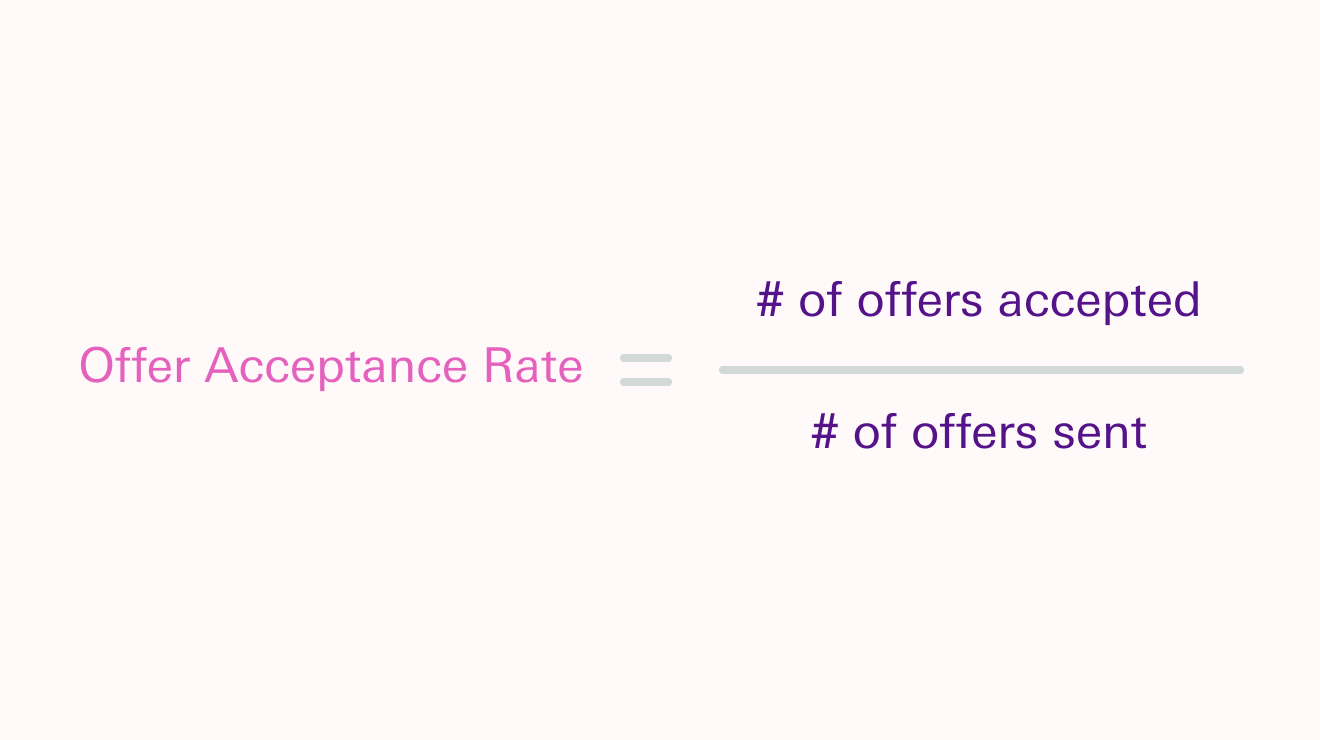If you’re not formally tracking your offer acceptance rate yet, now is the best time to start.
Ultimately, your talent acquisition process hinges on accepted offers. We all want to be wanted by others: in this case by our most talented candidates for the job.
Your offer acceptance rate can show if candidates had a positive experience; enough so that they were compelled to accept your offer. Of all the recruitment analytics you can collect, this one should be a high priority for any TA team. Don’t know if your job offers are attractive enough for the best people in your talent pipeline? Now you can find out!
How do I calculate my Offer Acceptance Rate?
Yes, this is a simple recruitment metric. Yet it has a lot of potential causes and some big implications for your growth.
Take the number of offers you get back (signed) and divide that by the number of offers you send out. Piece of cake, right?

In practicality, though, getting this information in one place across your company may not be so easy. Some applicant tracking systems don’t track accepted offers, which can create missing information and inconsistencies across departments.
Sometimes the offer acceptance period triggers a handoff between talent acquisition and other HR functions and candidates’ info can get stuck in limbo. This metric is so important, you need a reliable process for tracking it.
So What?
Now that you’ve found your company’s offer acceptance rate through the formula above (or you already have it), what do you do with this knowledge?
Well to start, it helps to know whether this broad number is a warning sign or not. Though industry-wide offer acceptance rates seem to vary widely, from some reports of 95% or 66%. Though a company’s employer brand and reputation, compensation package, industry, and skill at creating a good candidate experience can all shift offer acceptance rates, you should spend more effort looking at the challenges in your process if your acceptance rate is less than 80-90%. While not everyone you want will want you back, a low offer acceptance rate might signal issues with your hiring process length, where you’re sourcing candidates, or what criteria you’re focusing on when hiring.
Offerees that reject you can be a valuable source of information on their priorities and where you might have fallen short. If you consistently lose offers to certain competitors, or if candidates’ experience in the interview process was uncomfortable, this gives you a good starting point for investing time and effort into your candidate experience.
If your employee turnover is driving your need for more people, your offer acceptance rate will be even more critical. This is when you might be feeling the pain of turnover costs and will especially need to lower that time-to-fill for replacement positions. Knowing why you have rejected offers and how many are rejected for reasons you can control will add the next steps onto this metric.
How do I answer this question with Orgnostic Platform?
If your applicant tracking system includes sent and accepted offers, Orgnostic’s platform will pick up this information and make an Offer Acceptance Rate metric under the ‘Talent Acquisition’ chapter. If these numbers are housed in different databases, you may also need to link up your HRIS and pull sent offers from one place and accepted offers from another. Fortunately, you can do either with Orgnostic to get the data you need on talent acquisition.
From here, the Orgnostic platform makes it easy to look at trends over time, see differences in acceptance rates across candidate demographics and departments, and link this metric up with info about the broader employee lifecycle.
From the Talent Acquisition series:
- How Many Applicants on Average Do I Need to Make One Hire?
- How Do Employee Referrals Compare to Other Sourcing Channels?
- What Are the Most Cost-Effective Hiring Sources?
- What Is Your Quality of Hire?